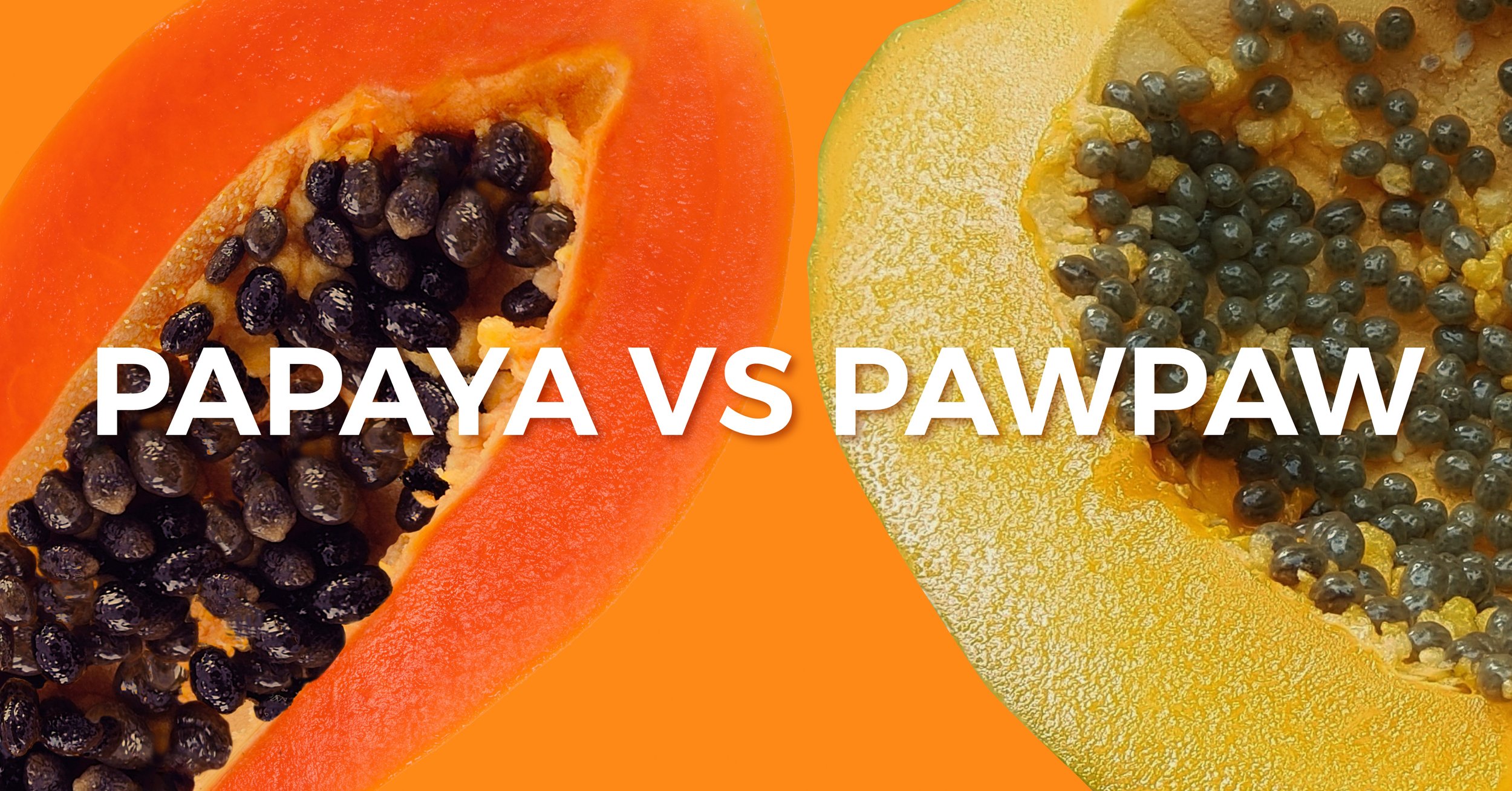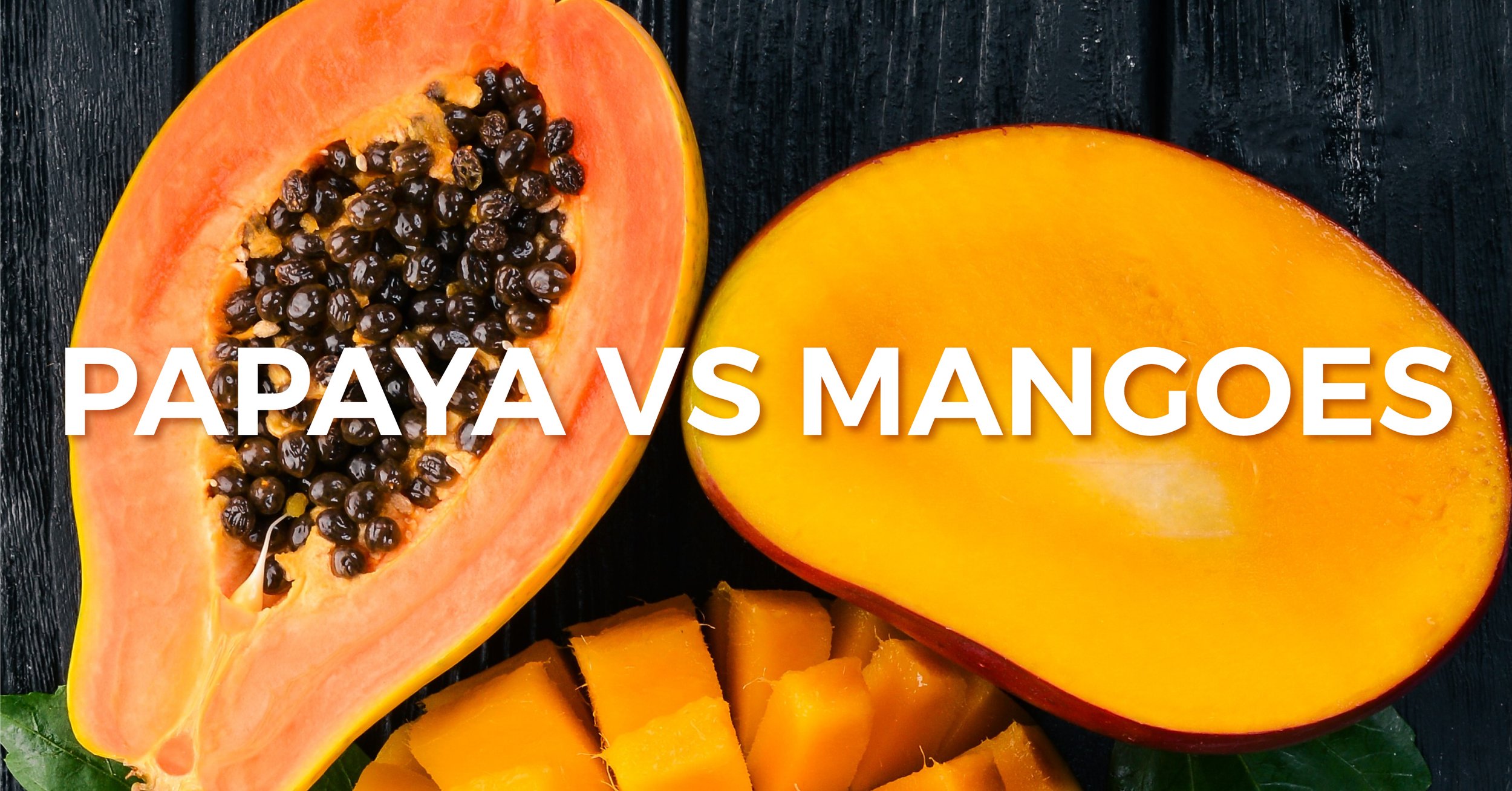Grown in the perfect conditions of Far North Queensland, Ruby Rise Red Papaya is an amazingly healthy way to bring colour and tropical goodness to your breakfast table and everyday recipes. But have you ever stopped to compare how papayas measure up to other fruits that Australians regularly consume?
Let’s start with the big one - papaya vs pawpaw. Papaya and pawpaw share a similar name and are even used interchangeably in some parts of the world to describe the same fruit, which has caused some widespread confusion! To make things clear in the Australian fruit industry, the sweeter red-fleshed fruit is called red papaya, while the yellow-fleshed fruit is called yellow pawpaw. They are different varieties of the same tropical fruit species originating from America. American pawpaw, on the other hand, is an entirely different fruit not related to the tropical fruit species from which the Australian red papaya and yellow papaw derive.
Australian pawpaw is a large, oval-shaped fruit (much like a football), with a mild tropical taste, often described as being similar to bananas. The papaya is a smaller oval or pear-shaped fruit, with a sweeter, tropical flavour. Both papaya and pawpaw seeds can be eaten if consumed in small quantities. Being varietals of the same fruit species means they both have similar nutritional benefits, packed with supergoodness. Papayas and pawpaws are both low in calories, with only 39 calories per 100g. A single-serve of Ruby Rise Red Papaya or yellow pawpaw can provide more than double your daily vitamin C needs. Furthermore, the fibre obtained from the fruit helps to reduce the effects of constipation.
While dissimilar in taste and name, papayas and mangos are similar in appearance and sometimes can be confused with each other. Both are bright, sunny coloured tropical fruits, often used in similar recipes and are grown in similar areas. While papayas have a very creamy, slightly sweet flesh, mango has been described as a mixture of sweet and sour, blending the flavours of peach, pineapple and apricot. Inside the flesh of the mango, surrounded by a thick husk, sits the mango seed. While these are generally not eaten, they can be prepared to be consumed if taken from an unripe mango.
Lush, delicious and bursting with nutritional goodness, mango is generally the go-to choice when looking to add a healthy burst of freshness to your diet. Mango is richer in folate, vitamin A and K compared to papayas, however, papaya has over 50% more vitamin C and is enriched with cold-busting properties. Furthermore, while mangos are generally low in calories (62 cal. per 100g) and high in fibre, papayas contain less sugar than mangos, making them a more popular choice when someone is watching their macros.
Not only are both of these fruits delicious separately, but you can also try a yummy mix of them in our Papaya, Mango & Yoghurt Swirl Popsicles.
Apples and papayas are not usually considered rivals in the fruit industry as they are very different in taste, texture and are used in very different recipes. Most apples are a little sweet and a little tart, with a delicious crisp bite. Apples have small, black seeds that are generally discarded along with the apple core but are safe to consume in small amounts. Similar to papaya, apples are eaten most frequently raw, but are also delicious grilled, pureed or cooked. As they are grown worldwide, apples are one of the most popular fruits, playing a significant role in our everyday diets. Let’s compare their nutritional benefits to the delicious tropical papaya!
While apples are known for the nutritional benefits they provide, you will be happy to know that papayas are relatively richer in minerals and vitamins than apples. They contain more Vitamin A, Vitamin E, and Vitamin B-complex, all-important to eye and skin health. Similar to the other fruits already explored, papaya contains more vitamin C than apples - 13 times more! Nevertheless, apples contain less sodium, less saturated fat and have a lower glycemic index than papayas. They are a good go-to for those looking to lose weight although not as low in sugar as papayas, apples contain 52 calories per 100g.
Similar to apples, oranges are a popular fruit worldwide. Oranges have cornered the market in juice – becoming the king of breakfast liquids. The orange is a round or oval tangy citrus fruit, with a hard rind that is usually peeled before consumption. Papaya flesh is fully intact whereas oranges consist of several easily separated sections, each with sweet juicy flesh inside. Orange seeds are very hard and bitter to the taste, but perfectly safe to ingest. Compared to papaya, oranges are more frequently consumed as they are rather than grilled or cooked.
Orange and citrus fruits are supposedly the kings of vitamin C, and are known to have the vitamin in high quantities. It is said that a single orange can fulfil a significant portion of your recommended daily dietary allowance of vitamin C. However, half a papaya provides a significantly higher amount of vitamin C than a single orange. Oranges are also a great source of calcium, necessary for building and maintaining strong bones. They have over double the amount of calcium that a papaya contains. Furthermore, while on the lower end of the spectrum, oranges contain more calories than papayas, with 47 calories per 100g.
Instead of sticking with orange for your dose of breakfast sweetness, why not give our nutritious Berry Smoothie Red Papaya Boat a try.
Papayas are rich in valuable nutrients and have a delicious tropical taste. You can check out the Ruby Rise Red Papaya nutrition panel here. Now that you have compared papayas to other favourite Australian fruits, try one of our delicious papaya featured recipes and taste the supergoodness! Explore our full recipe list.






